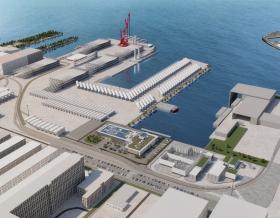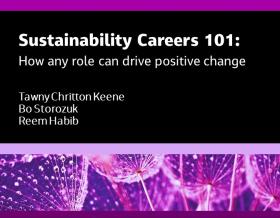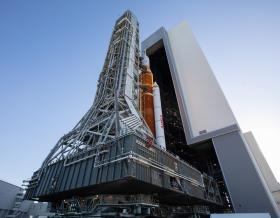
Equality and social inclusion must go hand in hand with climate protection and economic growth to ensure the long-term success of sustainable cities and a green recovery post-pandemic, says a new report published today (March 9, 2021).
The Rethinking Sustainable Cities report highlights how the pandemic has resulted in a greater imperative to unify efforts and change our cities for the better, so they not only protect our planet but people, too.
Lockdown and social distancing measures have exposed limitations to our existing urban design. The inability to work and socialize safely has rendered many city centers empty. While a lack of access to green spaces in residential zones has caused a sense of claustrophobia.
In response, the report highlights that cutting carbon emissions is only one important piece of the puzzle when it comes to creating sustainable cities. Success also hinges on social inclusion and the wellbeing of residents being prioritized alongside both climate protection and economic growth.
The report explores the opportunities and challenges to achieving this balance and encourages governments, city planners, policymakers and businesses to seize this opportunity to fundamentally rethink how our cities work for people now and in the future.
It recommends the creation of a new unified blueprint for inclusive and environmentally sustainable city design which can be localized or replicated at scale. To deliver maximum value across all the United Nation’s Sustainable Development Goals, this will not only require rethinking the design of transport, infrastructure, housing and development projects, but also how impact and success is evaluated.
The Rethinking Sustainable Cities report is produced by Jacobs and London Transport Museum, in partnership with the international law firm Gowling WLG, global transportation company Thales, and mobility and logistics software solutions business PTV Group.
It draws on digital roundtable discussions with industry leaders, policymakers and academics throughout 2020 as part of Interchange, London Transport Museum’s thought leadership program.
The report’s recommendations for establishing a blueprint for inclusive, sustainable cities include:
- Redefining value to prioritize wellbeing and inclusion – For a green recovery to be successful, public and private sectors must commit to building inclusively. This is essential to ensure developments in technology and infrastructure do not unintentionally widen the wealth gap. Investing in less ‘desirable’ and often overlooked areas would improve value perception and promise fair and sustainable growth long-term. But to achieve this, a shift in how we evaluate projects is needed. Success can no longer be measured by immediate cost-benefit. Instead, value must be looked at through multiple lenses. These include social inclusion, reduced congestion, better air quality, improved health and environmental change.
- Educating and empowering individuals to change their behaviors – Community engagement is essential to the long-term viability of sustainable cities and ensuring residents are not left behind. It must start early in the development process and focus on educating and empowering people to understand the long-term benefits of sustainable infrastructure projects, verses short-term disruption. If individuals are personally contributing to positive change, they should personally profit from it, too. At a consumer level, new social digital currencies and tools that allow people to understand and change their behavior - and reward them for doing so - should be embraced as powerful drivers for change.
- Overhauling institutional governance to encourage new ways of working – Policy decisions have the power to change behavior at every level. But more urgency is needed to drive us rapidly away from business as usual. The success of the U.K.'s plastic bag tax proves people are willing to make changes when it is made easy for them. By offering clearer taxation and pricing incentives, policymakers can make inclusive and sustainable options more attractive and widely available. In the U.K., for example, reducing stamp duty for low-carbon homes could help to drive new market demand for existing housing stock to be retrofitted much more rapidly to reduce carbon emissions.
- Repurposing existing urban infrastructure for multi-purpose use – To increase social value for residents and reduce waste, city planners should invest in adapting and building flexible multipurpose spaces. One suggestion is to build around a platform model, whereby work, leisure and residential spaces are connected digitally to optimize their usage and value. All new and retrofitted developments will need to be built with sustainability standards in mind, whether public or private, small or large-scale. For this to be successful, market demand and commercial expectations need to be aligned to new, unknown architectural models. City-makers will need to be trained to design differently. Individuals will need to have their minds changed about what a home or office looks like, too.
- Harnessing the power of natural infrastructure – The pandemic has revealed how rigid our current city plans are, with distinct work, leisure and residential areas. Harnessing natural infrastructure within sustainable urban design offers an enormous opportunity to address this. Hardworking urban green spaces minimize pollution. They also control temperature and regulate air and water quality. But they can also be designed to deliver community cohesion, reduce crime rates and better mental health. For investment in natural infrastructure to take off though, a shift in mindset is needed. A shared and accepted language for the value of green infrastructure is essential. New funding must also be redirected to pilot projects to prove and quantify the added long-term value of holistic social, health and wellbeing.
“The pandemic brought into sharp focus the importance of collaboratively designing bolder city infrastructure solutions that reinvent tomorrow and maximize long-term benefit and value to all of us socially, environmentally and economically," said Jacobs People & Places Solutions Senior Vice President Europe and Digital Strategies Donald Morrison. "If we are to truly level up our society and build back better and more inclusively, we need to apply past learnings quickly and think carefully about the actions needed now to add tangible, long-term value to our cities and the people who live in them.”
Director of London Transport Museum Sam Mullins OBE said: “The pandemic has been a defining moment in modern history, exposing limitations to the way we currently create and use our city spaces. Coupled with an impending climate emergency, it is clear we need to act quickly to rethink our vision of sustainable cities. Now is the time to take these learnings and apply them to transport, infrastructure and city-making projects before it is too late, creating value for the people who live in our cities now and in the future.”
Achieving sustainability is no longer optional for mankind, but essential," agreed Giles Clifford, Partner at Gowling WLG. "Doing that effectively and rapidly in the city environment, where individual needs and collective actions have such a complex relationship, is a massive and intensely practical challenge. Just as in deploying the COVID vaccines, we need to move fast from abstract policy targets to the nuts and bolts of delivery.
"It is about individual and collective priorities and motivation, removing barriers and aligning objectives to a common goal. Dry-sounding concepts such as law, taxation, governance and subsidy can become the tools to forge the future – or if misused can thwart, confuse and hinder progress. It has been fascinating to be involved in the debates that have formed this report – these are issues that we must all engage with, hands-on and not just in theory," he added.
Director of Strategy, Sales & Marketing for Thales in the U.K. Mark Garrity said: “2020 was a year that many of us will want to forget, forcing changes to our everyday lives that will likely leave a permanent impact on us all. It is now in our hands to make sure that good can be grasped from this situation to create a more sustainable and inclusive future for London and other cities around the country.
"The challenge is how to harness the opportunities that change brings whilst putting people and their welfare at the center of how we restore our thriving cities in an inclusive and sustainable manner. Technology definitely has a part to play in the sustainable development of cities," said Mark. "Using technology to enable a better quality of life, as well as inform better decisions and choices in a manner that closes the gaps between our communities, rather than widening them, is a challenge we must take on together.”
Director of Global Pre-Sales at PTV Group Paul Speirs said: “Mobility is at the heart of every successful city and defines how well connected its population is. History shows the resilience of organically grown cities, beginning as trading hubs and enlarged by increasing commerce, the industrial revolution and the advent of the railways.
"The car centric dominance has in some way ripped through our cities, but peeling back the layers, the framework for the ‘15-minute city’ remains. People need to meet, mix and trade. It’s in our genes. For many, the pandemic gave a glimpse of the lost neighborhoods and posed a reminder that the presence and free movement of people create vibrancy and vitality. With a careful blend of mobility and land use planning, a sprawling city can be reimagined and reconnected as a collection of thriving and sustainable urban villages,” concluded Paul.
Access the full report and learn more about the Interchange program here: www.ltmuseum.co.uk/interchange












2c4e.jpg)


















_0ac2b.jpg)









2747.png)














